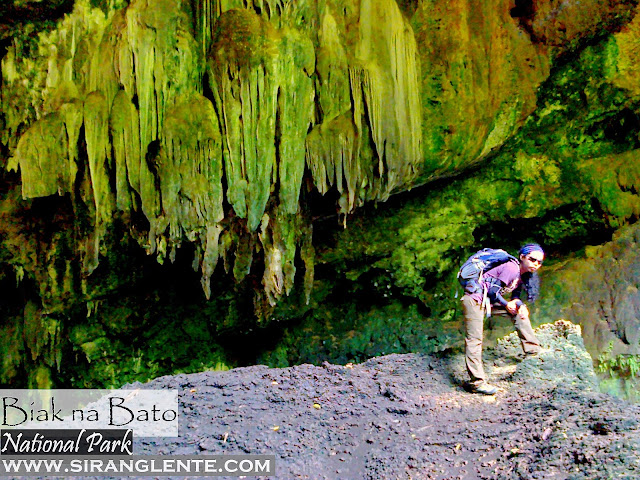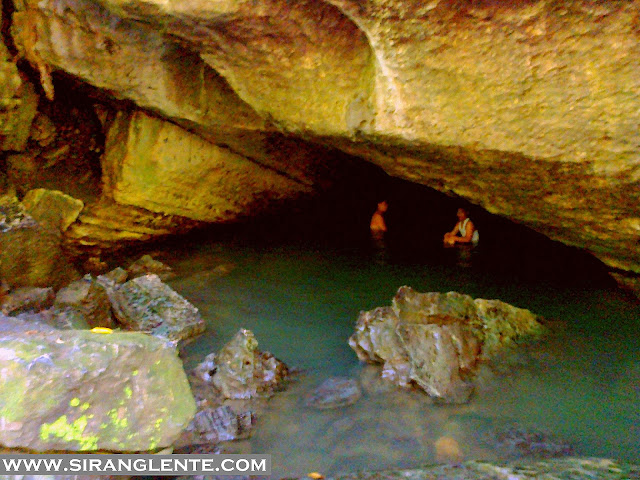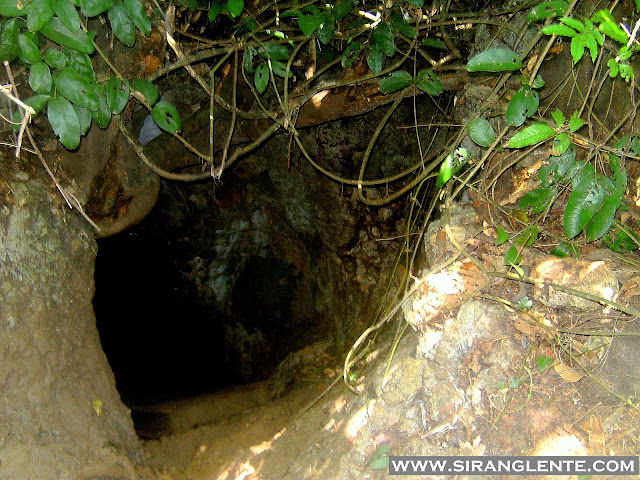
It is situated in San Miguel, Bulacan, and is one of the top travel destinations in the province because of its historical contribution to the Philippine Republic. Biak na Bato or "split of the boulder" in English, is where Gen. Emilio Aguinaldo signed the Malolos Republic (the first Constitution of the country). Aside from its historical background, tourists and students visit this park to relax, breathe some fresh air, and witness the beauty inside the caves, especially the stunning Bahay Paniki Cave, the highlight of the area. By the way, it was declared a national park in 1937 by the former president Manuel L. Quezon.

Entrance Fees:
- Adults: 50 Pesos per person
- Students: 40 Pesos per person
- Senior Citizens, PWD, and Children below 7 years old: 40 Pesos per person
- Foreigners: 100 Pesos per person
Tourist Guide Fee:
- 300 Pesos and it's 1 Guide for 5 tourists.
Tourist Spots and Activities:
Some concrete pathways and bridges serve as the connection to certain parts of Biak na Bato National Park, crossing the Balaong and Madlum rivers. The local government built a river wall to protect the area from soil erosion. The trail going to each highlight is simple and the terrain is surrounded by greens. In this park, three caves can be found. These caves were used by the Katipuneros during the Spanish Colonial led by Emilio Aguinaldo.

Bahay Paniki Cave (House of Bats) is located 300 meters south of the Aguinaldo Cave. Its location is not easy to penetrate due to some sharp and slippery stones. Since the area is composed of plants, it serves as the home of some poisonous snakes, scorpions, and insects. It is said to be the home of at least six species of winged mammals like: kabag-kabag, ngusong kabayo, bungisngis, sibsib, bayakan and pakibu. Inside the cave is an open space that stretches 30 meters up forming a colorful, gorgeous, and spacious dome. The boulders are really huge, I think it's like a 2-story building tall. Then beside the cave is the flowing water coming from the spring, inside the cave.

The Aguinaldo Cave is the most notable among other caves of Biak na Bato National Shrine. It is the cave where Gen. Emilio Aguinaldo once took refuge while leading the resistance movement against the Spanish and American colonizers. It is believed that this cave was the La Mesa de Aguinaldo, the table at which Aguinaldo signed the historic Peace Treaty.

Ambush Cave or Yungib 1 has a narrow and long cavern inside. There were several battles that happened in this cave; this was the place where the Katipuneros brought the Spaniards and killed them. But instead of killing the Spanish soldier, the Katipuneros killed the other Katipuneros and the Spaniards killed the Spaniards because the place was really dark and they didn't recognize that they were killing their own group members.

Hospital Cave or Yungib 2 served as the hospital for the Katipuneros. This was the dwelling of those people who got shot or ill during the battle against the Spaniards. Together with my two guides, we had a short prayer (in Portuguese or Latin) in the form of a Pasyon (a native song) for those people who sacrificed their lives just for our Freedom against the Spaniards.

Imbakan Cave or the Yungib 3 played a big role during the fight against the Spaniards. This was the place where the Katipuneros (Filipino Revolutionaries) stored their food, medicines, bullets, ammunition, and other things that they were using during the fight.

Tanggapan Cave served as the office and the recruitment area of the Katipuneros including Gen. Emilio Aguinaldo, for their new members. This is also the place where the new recruits were being oriented about the plans to fight against the Spaniards.
National Park Hours:
- They are open Daily from 8:00 AM to 5:00 PM.
Contact Details:
- 0995 491 5417
- bnbnpbulacan.r3@gmail.com
- Or FB Page: https://www.facebook.com/BNBNPBulacan
How to Get to Biak na Bato National Park:
- Search for Biak na Bato Pavilion on Wave or Google Maps.
- Public Transportation: Take a bus from Cubao to Canatuan, Nueva Ecija (via San Miguel). Alight at St. Paul University San Miguel Campus in Brgy. Salangan. Take a tricycle to the National Park.
READ: LIST OF TOURIST SPOTS IN BULACAN
CLICK TO VIEW AFFORDABLE PLACES TO STAY IN BULACAN
